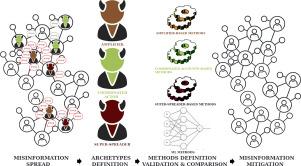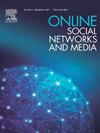Predicting, evaluating, and explaining top misinformation spreaders via archetypal user behavior
IF 2.9
Q1 Social Sciences
引用次数: 0
Abstract
The spread of misinformation on social networks poses a significant challenge to online communities and society at large. Not all users contribute equally to this phenomenon: a small number of highly effective individuals can exert outsized influence, amplifying false narratives and contributing to significant societal harm. This paper seeks to mitigate the spread of misinformation by enabling proactive interventions, identifying and ranking users according to key behavioral indicators associated with harmful content dissemination. We examine three user archetypes — amplifiers, super-spreaders, and coordinated accounts — each characterized by distinct behavioral patterns in the dissemination of misinformation. These are not mutually exclusive, and individual users may exhibit characteristics of multiple archetypes. We develop and evaluate several user ranking models, each aligned with a specific archetype, and find that super-spreader traits consistently dominate the top ranks among the most influential misinformation spreaders. As we move down the ranking, however, the interplay of multiple archetypes becomes more prominent. Additionally, we demonstrate the critical role of temporal dynamics in predictive performance, and introduce methods that reduce data requirements by minimizing the observation window needed for accurate forecasting. Finally, we demonstrate the utility and benefits of explainable AI (XAI) techniques, integrating multiple archetypal traits into a unified model to enhance interpretability and offer deeper insight into the key factors driving misinformation propagation. Our findings provide actionable tools for identifying potentially harmful users and guiding content moderation strategies, enabling platforms to monitor accounts of concern more effectively.

通过原型用户行为预测、评估和解释最主要的错误信息传播者
错误信息在社交网络上的传播对在线社区和整个社会构成了重大挑战。并不是所有的用户都对这种现象做出了同样的贡献:少数高效的个人可以施加巨大的影响力,放大虚假的叙述,造成重大的社会危害。本文旨在通过主动干预、根据与有害内容传播相关的关键行为指标识别和对用户进行排名来减轻错误信息的传播。我们研究了三种用户原型——放大者、超级传播者和协调账户——每一种都以传播错误信息的不同行为模式为特征。这些不是相互排斥的,单个用户可能表现出多个原型的特征。我们开发并评估了几个用户排名模型,每个模型都与一个特定的原型相一致,并发现超级传播者的特征始终在最具影响力的错误信息传播者中占据主导地位。然而,随着排名的下降,多种原型的相互作用变得更加突出。此外,我们展示了时间动态在预测性能中的关键作用,并介绍了通过最小化准确预测所需的观测窗口来减少数据需求的方法。最后,我们展示了可解释人工智能(XAI)技术的效用和好处,将多个原型特征集成到一个统一的模型中,以增强可解释性,并更深入地了解驱动错误信息传播的关键因素。我们的研究结果为识别潜在有害用户和指导内容审核策略提供了可操作的工具,使平台能够更有效地监控相关账户。
本文章由计算机程序翻译,如有差异,请以英文原文为准。
求助全文
约1分钟内获得全文
求助全文
来源期刊

Online Social Networks and Media
Social Sciences-Communication
CiteScore
10.60
自引率
0.00%
发文量
32
审稿时长
44 days
 求助内容:
求助内容: 应助结果提醒方式:
应助结果提醒方式:


